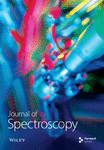The structural and spectroscopic basis for modelling prion protein interactions
Abstract
Mammalian prion diseases are characterised by an α-helical to β-sheet conformational change within the prion protein, that was originally established with circular dichroism (CD) and Fourier transform infrared (FTIR) spectroscopy. Since prion disease is transmissible, significant effort has been aimed at establishing the molecular details of conformational change and the specificity that underpins infectivity. The structure determined for the carboxy-terminal domain of the predominantly α-helical form by nuclear magnetic resonance (NMR) provides a starting point for considering questions at the molecular level. However, elucidation of atomic detail for the β-rich form is complicated by problems of protein solubility, and regions other than the carboxy-terminal domain of the α-rich form are likely to possess functionally significant, ordered domains in the presence of suitable ligands and solution conditions. Further spectroscopic analysis, particularly of polypeptide secondary structure, is playing a key role in constraining molecular modelling studies of prion protein folding and interactions. We present a review of this area of prion research.




